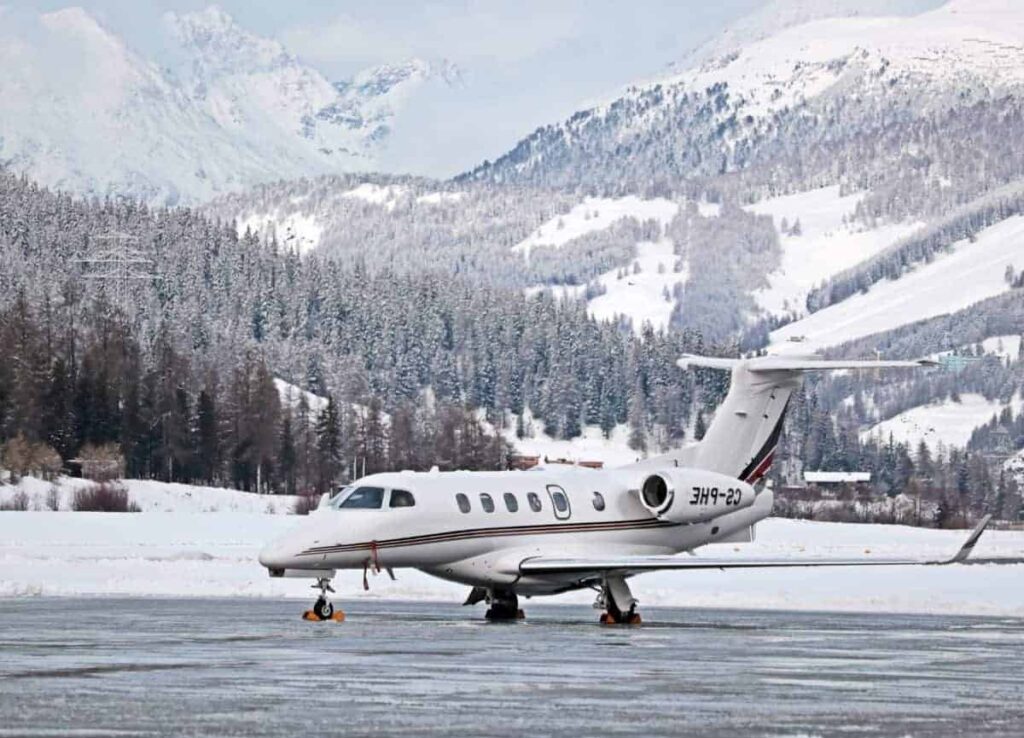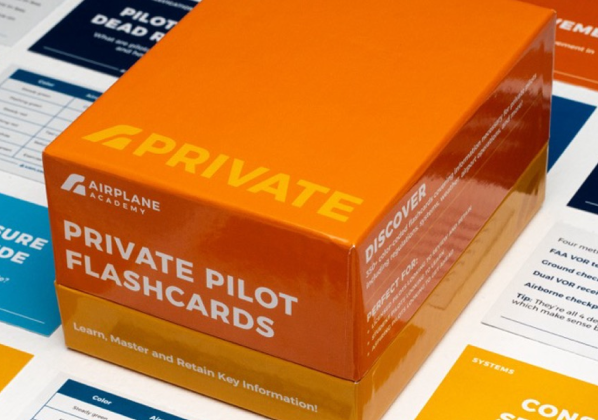
Most aircraft (commercial jets) are designed to cruise at high altitudes for the favorable fuel efficiency and engine cooling properties of the less dense cold air. For context, between 30,000 and 40,000 feet where airliners typically fly, average temperatures usually range from -40° F to -70° F (-40° C to -57° C). Engines burning fuel at 1,650° F (900° C) enjoy the cooler ambient temperatures around them at that altitude, but what about the fuel itself? How does aircraft fuel not freeze at high altitudes?
Aircraft fuel generally does not freeze at high altitudes because of the very low freezing temperature of the fuel, the limited amount of time spent in the cold environment, and aircraft design keeping the fuel warm either via insulation from the airframe itself or by heating and circulating the fuel throughout the flight.
Frozen fuel is not a cause of accident that you hear very frequently, although it can happen. There are some good reasons why it’s not very common and why you can be confident that your fuel is plenty warm even on long distance, high altitude flights.
How does aircraft fuel not freeze at high altitudes?
There are several scientific reasons that the fuel does not freeze in flight even at high altitudes. Additionally, engineers have also found clever ways to both keep the fuel warm and the engine components cool by utilizing the fuel in the fuel tanks, which we will cover at the end.
Temperature Lapse Rate and Where Freezing Level Begins
First things first, where does the freezing level even start? Well, the freezing level is going to be different for various liquids because not everything freezes at 32° F (0° C) like water does. But regardless of when freezing begins, we can at least determine what the average temperature might be at given altitudes by looking at the temperature lapse rate.
In a standard atmosphere, the temperature lapse rate (how much the air temperature decreases with an increase of altitude) is about 3.5° F (2° C) per 1,000 feet. This means that at sea level at standard pressure and standard temperature, the temperature would be 15° C. At 7,500 feet, the temperature would be 0° C (15° – (2° C x 7.5)), or right at the freezing temperature for water.
You could continue to calculate the temperature under the same lapse rate until the tropopause (where the troposphere meets the stratosphere and the lapse rate changes altogether). Depending on where you are, the tropopause ranges anywhere from about 30,000 (near the poles) to 55,000 feet (near the equator).
In unstable air the temperature lapse rate can be much different than the standard amount listed above, but that’s the general rule of thumb to determine the freezing level. The freezing level and lapse rate will vary by location and even by the minute, and you can find the winds aloft and temperatures over major airports in each region through apps like Foreflight also also aviationweather.gov.
All of that to say, in order to answer the question about fuel freezing in the tanks, we needed to know where the freezing level even begins and what kinds of air temperatures might be outside the airplane at a given altitude.
Freezing Temperature of Fuel
Now that we know the temperature lapse rates in order to find what the air temperature is for various altitudes, what is the freezing temperature of aviation fuel? Well, it’s actually far below the freezing temperature of water.
According to AOPA, here is the average freezing temperature for popular jet fuels:
- Jet A (most commonly used in the United States): -40° C (-40° F)
- Jet A-1 (used elsewhere in the world): -47° C (-53° F)
- Jet B (most commonly used in Northern Canada for very cold temperatures): -60° C (-76° F)
- No. 3 Jet Fuel (most commonly used in China): -47° C (-53° F)
- TS-1 (most commonly used in Russia): -50° C (-58° F)
Additives (such as Prist) are commonly used in jet fuels to lower the freezing temperature and also prevent microbial growth that could contaminate the fuel.
According to ExxonMobile Avgas (100LL) has a freezing temperature of at least -58° C (-72° F) and possibly colder. However it’s important to remember that water still freezes at 0° C (32° F) and so any water in (in fuel tanks, in gas lines, in carburetor, etc.) or on your aircraft (i.e. structural ice) can still freeze even though your fuel may not.
What about carburetor icing? Is that the fuel freezing?
Carburetor ice isn’t really the fuel freezing but more so the humid air and below freezing temperatures caused by the low pressure venturi effect around the nozzle within the carburetor causing ice to form. This can certainly happen underneath the freezing altitude in even warm conditions (I once picked up carb ice over the Utah desert in June), but it’s not the fuel itself freezing but rather the humid air being cooled below freezing within the carburetor.
Conversely, even with freezing temperatures in the carburetor, if the air is dry enough it won’t develop ice (because there isn’t enough moisture to freeze, and the fuel itself typically does not freeze).
For more on this topic, see our post on carburetor icing and its causes, indications, and remedies.
Fuel Insulates Itself
Even when water is exposed to below freezing temperatures it can take a while (sometimes a LONG while) to freeze because the water is insulated by itself. Think of a pond or small lake during the winter – it takes some time for it to freeze because the entire body of water has to collectively get cold enough to allow even the surface to freeze. Exposing one portion of the liquid to below freezing temperatures does not automatically mean that the liquid will freeze.
In the same way, fuel resists immediate freezing even when the ambient temperature of the surrounding air is beneath the fuel’s freezing temperature because the overall body of fuel is insulating itself. The more fuel you have onboard, the longer it will take to freeze – just like a lake takes longer to freeze than a pond.
Outside Air Temperature Isn’t Always the Same as the Fuel Tank
Similar to how fuel will insulate itself to some degree because the overall temperature of the fuel takes a while to be impacted by the ambient air temperature surrounding it, the air temperature of the fuel tank itself often differs from the temperature of the air outside the airplane.
Granted, it will likely be fairly close but the air temperature hitting the wings at altitude isn’t immediately creating the temperature inside of the wing or fuel tank to be that same temperature. It takes some time to change the internal air temperature of the air pockets within the airframe because of the minor insulating properties of the airframe itself.
Aircraft Design
Other than the low freezing temperature of aviation fuels (both Jet A and 100LL), aircraft design is probably one of the biggest reasons that fuel usually does not freeze, even at very high altitudes and below freezing temperatures.
For example, some jets actually use the jet fuel to cool the engine oil and circulate it back into the fuel tanks, both accomplishing cooler engine temperatures and above freezing fuel temperatures.
Some aircraft will circulate the fuel itself within the fuel tank to avoid isolated sections of the fuel that would otherwise freeze first.
Lastly, some aircraft will strategically place other components (such as hydraulic lines) near the fuel tank that will radiate heat onto the fuel tank and slow the cooling process of fuel.
These design elements are more commonly found in aircraft designed to endure high altitudes and very cold operations for prolonged periods of time.
Conclusion
For most general aviation aircraft (especially pistons), freezing fuel is really not something you need to worry too much about unless you’re in extreme cold weather operations. Induction and structural icing is much more likely to occur than the fuel itself freezing.
But even for jets consistently cruising where the air is well below zero and often below the fuel’s freezing temperature, there are often safeguards in place (both naturally occurring like liquid insulating itself, and manufactured like circulating and heating fuel) to ensure that the fuel won’t freeze.
As always, be sure to familiarize yourself with your specific aircraft since you as pilot in command are ultimately responsible or the safety of the flight.
While you’re on the subject… here are other articles on Airplane Academy related to fuel:



